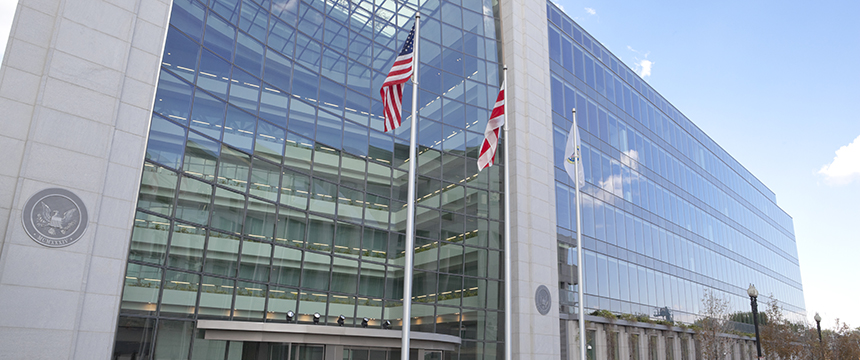
On January 24, 2024, almost two years after it was initially proposed, the U.S. Securities and Exchange Commission (the “Commission”) adopted final rules regarding special purpose acquisition companies (“SPACs”), shell companies, and disclosure related to projections. A known focus of Commission Chairman Gary Gensler since May 2021 when he discussed devoting significant resources to addressing issues in de-SPAC transactions to the House Appropriations Committee, the rules and amendments require more fulsome and transparent disclosure.
The final rules will become effective 125 days after publication in the federal register.
Background
SPACs are typically shell companies formed for the purpose of merging with or acquiring a private target company. However, during the surge in SPAC formations and completions of de-SPAC transactions in the early 2020s, a variety of market observers raised concerns about, among other things, the nature and disclosure of SPAC sponsor compensation; potential conflicts of interest that could incentivize SPAC sponsors to enter into de-SPAC transactions that are “unfavorable” to public shareholders; the use of projections that, in the view of some market participants, appear to be unreasonable, unfounded or potentially misleading; and the lack of a traditional gatekeeper similar to the role played by underwriters in IPOs.
The final rules are the Commission’s attempt to address such concerns.
Enhanced Disclosure
The final rules implement a new subpart 1600 to Regulation S-K which sets forth disclosure requirements for SPAC IPOs and de-SPAC transactions. These new rules include enhanced and more prominent disclosure regarding, among other things:
- SPAC Sponsors. Item 1603 requires disclosure related to the SPAC sponsor’s business, experience, roles and responsibilities, controlling persons and any arrangement between the SPAC sponsor and the SPAC with respect to deciding whether to proceed with a de-SPAC transaction. Additionally, disclosure regarding the nature and amount of compensation that will be awarded to, earned by or paid to the SPAC sponsor, its affiliates and any promoters is required.
- Conflicts of Interest. Item 1603 also requires disclosure of any actual or potential material conflicts of interest between the SPAC sponsor or its affiliates, the SPAC’s officers, directors or promotors or the target company’s officers or directors and unaffiliated SPAC security holders.
- Stockholder Dilution. Within subpart 1600 of Regulation S-K, new disclosures are required in connection with each of a SPAC IPO and de-SPAC transaction which focuses on the issuance of securities to the SPAC sponsor, its affiliates or promotors with various levels of sensitivity analysis tied to certain redemption levels as well as disclosure related to issuances in financing transactions.
- Board Determination and Fairness of the Transaction to SPAC Investors. If state law governing the SPAC requires its board to determine whether the de-SPAC transaction is advisable and in the best interest of the SPAC and its security holders, Item 1606 requires disclosure of such determination and the material factors involved in such determination. Item 1607 requires disclosure related to any reports, opinions or appraisals that were received by the SPAC or the SPAC sponsor and that were related to the fairness of the consideration to be offered to security holders of the target company.
Heightened Obligations and Stronger Investor Protections
The final rules also include several heighted obligations on SPACs and target companies aimed at providing investors greater protections and transparency including:
- Removal from PSLRA Safe Harbor. SPACs will no longer be allowed to use the safe harbors provided for under the Private Securities Litigation Reform Act of 1995 for forward-looking statements, therefore bringing the treatment of forward-looking statements in traditional IPOs in line with de-SPAC transactions. The Commission did specifically clarify, however, that the unavailability of the PSLRA is not intended to have any retroactive effect on any forward-looking statements made prior to the effective date of the final rules.
- Minimum Dissemination Period. Registration statements, proxy statements and information statements filed in connection with a de-SPAC transaction must be disseminated no later than the lesser of 20 calendar days prior to the meeting date or the maximum number of days permitted under applicable state law.
- Re-Evaluation of Smaller Reporting Company Filer Status. A post de-SPAC combined company is required to re-evaluate its smaller reporting company filer status with the public float measured as of a date no later than four business days after the completion of the de-SPAC transaction and to reflect this determination in its filings, beginning 45 days after the consummation of the de-SPAC transaction.
- Co-Registrant Requirement. Private, target companies in a de-SPAC transaction must be a a co-registrant with respect to any registration statement, thus making the private target company and its signing persons (directors and certain executive officers) subject to liability under Section 11 of the Securities Act of 1933, as amended, for any material misstatements or omissions in the registration statement.
Projections
In the final rules, the Commission sought to increase the reliability of projections in filings, as well as imposed additional requirements when projections are disclosed in connection with de-SPAC transactions pursuant to amendments to Item 10(b) of Regulation S-K. Among other things, the amendments require (i) clear delineation between historical results and future, projected measures; (ii) the presentation of a historical measure with equal or greater prominence when providing projections based on historical results and (iii) clear definitions and explanations of non-GAAP financial measures and why such non-GAAP financial measures were used compared to a GAAP measure. These amendments are applicable to all reporting issuers who include projections in their filings and will also apply to any projections of a target company included in a filing of a reporting issuer.
Further, in the final rules, the Commission adopted Item 1609 of Regulation S-K which only applies to de-SPAC transactions. Item 1609 requires additional disclosures including (i) who prepared the projections and for what purpose; (ii) all material bases of the disclosed projections and all material assumptions; and (iii) whether or not the projections still represent the view of the board or management of the SPAC or private target company as of the most recent practicable date prior to the filing of the registration statement or merger proxy statement and if not, then a discussion of the purpose of disclosing such projections and the reason for continued reliance by the management or board on the projections. Importantly, the Commission explicitly declined a commenter’s request to have the additional disclosure requirements of Item 1609 apply outside of the context of a de-SPAC transaction.
Underwriter Liability
In the final rules, the Commission did not adopt proposed Rule 140a that would have treated anyone who (i) acted as an underwriter of SPAC securities and (ii) either (a) aided or assisted in the de-SPAC transaction, (b) aided or assisted in any related financing transaction (e.g., a PIPE transaction) or (c) otherwise participated in the de-SPAC transaction, as being engaged in the distribution of the SPAC’s securities and subject to Section 11 underwriter liability in the de-SPAC transaction.
In declining to adopt proposed Rule 140a, the Commission instead provided guidance on being an underwriter in de-SPAC transactions and noted that it will continue to follow its practice of applying the terms “distribution” and “underwriter” broadly and flexibly as the facts may require. The final rules do confirm that the Commission views a de-SPAC transaction as a “distribution” of securities as the purpose of the de-SPAC transaction is to provide the target company with capital and access to the public markets, the interests therefore in a private target company “are dispersed to the public via a business combination with a SPAC” and thus the “distribution” is the process in which, no matter the structure, the SPAC-investing public receive interests in the post de-SPAC combined, public company.
Investment Company Status
In the final rules, the Commission did not adopt the proposed safe harbor that would exempt a SPAC from being considered an investment company, but did provide guidance as to its view in relation to certain factors that could cause a SPAC to meet the definition of an investment company in Section 3(a)(1)(A) or Section 3(a)(1)(C) of the Investment Company Act of 1940, as amended (the “Investment Company Act”). These factors included the nature of the SPAC’s assets and income; management activities; duration; its description (or holding out) of its activities; and the target entity in a de-SPAC transaction. If a SPACs activities bring it within the either of the definitions in the Investment Company Act, it should consider modifying its operations to come into compliance with the Commission’s guidance or register as an investment company under the Investment Company Act. It should also be noted that reporting companies may find the Commission’s guidance useful for their own analysis, regardless of whether or not they are a SPAC.
Conclusion: Will SPACs Continue as a Viable Alternative to IPOs?
The new rules and amendments represent material changes in the rules that apply to SPACs, though one could argue that, in anticipation of the final rules, the market has already incorporated many of these disclosure practices in the wake of the announcement of the proposed rules in 2022. According to ICR, only 32 SPAC IPOs priced in 2023 with the average IPO size down approximately 22% compared to 2022, a significant decline from the boom of the early 2020s. The Commission stated in the final rules that the adoption of the final rules were intended to “align disclosures in de-SPAC transactions more closely to those of traditional IPOs.” They have certainly accomplished that mission and time will ultimately tell whether or not private companies, sponsors and the market believe that a de-SPAC transaction is truly an alternative to an IPO for those companies that are not considered as ideal traditional IPO candidates.
